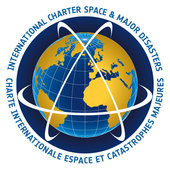Copernicus – a joint project between the EU and the European Space Agency (ESA) that uses satellites and ground sensors to monitor the environment – is the world’s largest civil Earth observation programme, producing over 8 petabytes per year.
Earth observation data has many important uses, such as tracking deforestation and rising sea levels, helping farmers and fisheries to operate sustainably, and monitoring humanitarian crises.
But Copernicus is not the world’s only supplier, and if the EU and others agreed to provide standardised Earth observation data through a shared and trusted platform, that platform could support additional innovative uses of data in science, business, and policy-making, on a greater scale than any lone data supplier.
Unfortunately, inadequate implementation of common data standards and reuse policies across different Earth observation programmes currently makes it difficult to reuse combined data.
One attempt to resolve this is the Global Earth Observation System of Systems (GEOSS), run by the Group on Earth Observations (GEO), an intergovernmental organisation with over 100 member countries – including the EU’s 28.
GEOSS provides a single portal for various sources of independently-supplied Earth observation data, along with common standards for incorporating them via the GEOSS Common Infrastructure (GCI).
No common standards
Despite the broad membership of GEOSS, it still faces the challenge of pushing for its standards to be widely adopted. There is no binding international agreement that commits the world’s Earth observation programmes to common standards.
If the world could move from merely having disparate suppliers of Earth observation data to sharing a common platform for them, it would be easier to incorporate data from different sources into important research.
It could range from tracking the effects of climate change to planning for global food security, and to use algorithmic techniques, such as text and data mining, to derive insights from huge and diverse data sets. This would help scientists to learn more about the Earth’s climate and its resources.
A shared platform for the world’s Earth observation data would enhance the abilities of governments that lack their own Earth observation technologies to monitor local environmental threats.
For example, the Global Monitoring for Environment and Security (GMES) & Africa initiative uses Copernicus data to help African nations plan infrastructural development, manage their natural resources, and monitor the effects of climate change, natural disasters, and war.
An international agreement on Earth observation data standards and reuse policies would also support economic innovation globally.
Copernicus data already has various commercial uses, such as helping farmers to manage land and crops more effectively, as well as identifying optimal locations for fisheries that are environmentally sustainable.
A larger, multilateral supply of interoperable data would enhance global capacity for this kind of data-driven innovation by broadening the amount of data businesses can work with at once.
The EU, alongside the ESA, should take the lead in forging an international agreement on the implementation of common standards and reuse policies for Earth observation data.
Driving innovation
The Copernicus programme itself already drives innovation by making its data freely available, including for commercial reuse. And the Copernicus B2B challenge offers cash prizes for participants with the best commercial applications of Copernicus data, such as helping insurance companies to predict losses.
If the EU wants to remain at the forefront of the production and use of Earth observation data, it should work with others to show that when many countries integrate data from their disparate sources, everyone is made better off.
The EU already has cooperation agreements on Copernicus data with the United States and Australia. These agreements help those countries to address local needs with data, such as detecting oil spills in the Gulf of Mexico.
They also bring together leading experts to collaborate on developing uses of Earth observation data that have common benefits, such opening up new markets for data-driven products and services in industries such as agriculture, fisheries, and mining.
Agreements like these demonstrate the benefits to the global environment and economy when different countries share data and expertise.
Similar bilateral cooperation with other countries running Earth observation satellites, such as India and Japan, could help build momentum for a multilateral agreement on interoperable data sharing.
Furthermore, the EU-backed Research Data Alliance publishes guidelines on data standards and reuse policies, which, in addition to GEOSS standards, could further contribute to an agreement on interoperable data feeds that third parties can compare, combine, and freely reuse.
Earth observation data is an important driver of innovation in environmental policy, urban development, scientific research, as well as in industry and business.
Copernicus alone is a towering achievement, but stronger political commitment to GEOSS, with binding agreements, would make it easier for scientists, governments, and businesses to make the most of the data provided by the world’s Earth observation platforms.
The EU should move swiftly to make this happen.
Source

